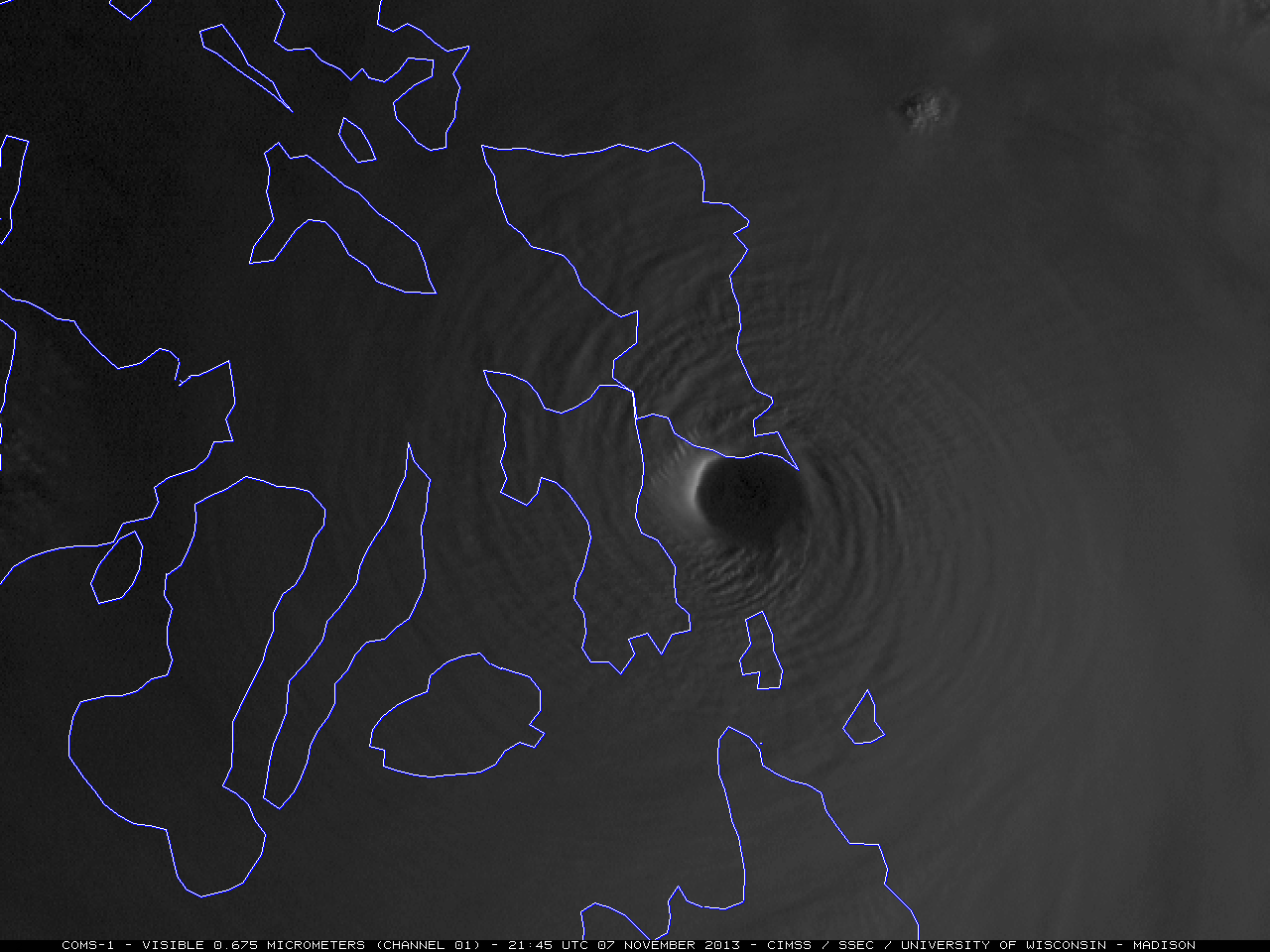



















One of the most powerful typhoons ever recorded slammed into the Philippines Friday, forcing hundreds of thousands from their homes and knocking out power and blacking out communications in several provinces. At least four people are dead, and the toll is expected to rise.
Super Typhoon Haiyan raced across a string of islands from east to west — Samar, Leyte, Cebu and Panay — and lashed beach communities with winds of over 124 mph as nearly 750,000 people were forced to evacuate.
Shortly before Haiyan (known locally as Yolanda) made landfall, the U.S. Navy's Joint Typhoon Warning Center said the storm's maximum sustained winds were 195 mph, with gusts up to 235 mph.
Most communications with the affected areas have been cut off, making it difficult to determine the full extent of casualties and damage. At least two people were electrocuted in storm-related accidents, one person was killed by a falling tree and another was struck by lightning, official reports said.
Southern Leyte Gov. Roger Mercado said the typhoon triggered landslides that blocked roads, uprooted trees and ripped roofs off houses around his residence.
The dense clouds and heavy rains made the day seem almost as dark as night, he said.
"When you're faced with such a scenario, you can only pray and pray and pray," Mercado told The Associated Press by telephone, adding that mayors in the province had not called in to report any major damage.
"I hope that means they were spared and not the other way around," he said. "My worst fear is there will be massive loss of lives and property."
Millions of people have also been affected in Cebu and Iloilo, highly populated areas with many tourists. Hundreds of thousands of people were moved before the worst of the storm hit.
Eduardo del Rosario, head of the disaster response agency, said a powerful typhoon that hit the central Philippines in 1990 killed 508 people and left 246 missing, but this time authorities had ordered pre-emptive evacuation and other measures in an attempt to minimize casualties.

An animation showing Super Typhoon Haiyan moving over the Philippines. (Courtesy of University of Wisconsin Space Science and Engineering Center)
Forecasters said the storm was expected to move out of the country and into the South China Sea on Saturday morning, and was likely to pick up renewed strength on its way toward Vietnam.
Dozens of flights in the central and southern Philippines were canceled. A storm surge estimated at 15 feet damaged a seaside airport in Leyte's Tacloban city. Airport workers moved to the tower and were safe, but no other details had been reported because communications were cut by the typhoon, aviation official John Andrews said.
"They've been incommunicado. The last message we got from them was that the airport was ruined," he said.
The Philippines, which is hit by about 20 typhoons and storms a year, has in recent years become more serious about preparations in order to reduce deaths. Public service announcements are frequent, as are warnings by the president and high-ranking officials that are regularly carried on radio, TV and social networking sites.
President Benigno Aquino III assured the public of warlike preparations, with three C-130 air force cargo planes, 32 military helicopters, 20 navy ships and additional planes on standby to come to the aid of typhoon victims.
Among the evacuees were thousands of residents of Bohol province in the central Philippines who had been camped in tents and other makeshift shelters since a magnitude-7.2 earthquake hit the island province last month.
The Red Cross has issued an aid appeal for the millions of people affected by the storm. Nichola Jones of the International Federation of the Red Cross said the Philippines Red Cross had already distributed emergency aid kits to people in the storm's path.
"But they are still extremely vulnerable, because you’re talking about thousands of people who were already living in makeshift shelters," Jones told Al Jazeera’s Caroline Malone.
Al Jazeera and The Associated Press
Error
Sorry, your comment was not saved due to a technical problem. Please try again later or using a different browser.